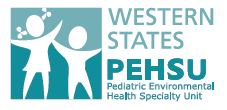
This is an easy to administer environmental health curriculum, which meets ACGME requirements, is adaptable to multiple sites, and doesn’t require expertise in environmental health to administer. It is not comprehensive in the topics of environmental health. Instead, it aims to teach pediatric residents proficiency in environmental health and establish a foundation of knowledge upon which they will expand during their careers.
The Community Environment
Pediatric residents learn how features of the neighborhood and community affect children’s health. Residents learn to recognize the role of features such as physical design, access to health promoting resources, relative proximity to and levels of pollution, and social structure. A faculty manual is provided that gives step-by-step instructions on how to set up a neighborhood walk to make the community environment module most useful.
The Home Visit
Pediatric residents learn to perform a basic environmental health history and assessment and analyze their findings. They also learn to give age appropriate anticipatory guidance using the Pediatric Environmental Health Toolkit (PEH Toolkit). In addition, this exercise helps residents become more familiar with environmental health topics and resources.
Fact Check
Pediatric residents practice using environmental health resources to critically evaluate mainstream publications. They also become more familiar with current events in environmental health.
PEH Curriculum Resources
This is a useful list of free, easily accessible resources from which to build a foundation of knowledge in children’s environmental health. It is not designed as a complete list of all available reliable resources, only as a place to begin.
ACGME Goals
This is a table of goals, methods to teach, and methods to measure to assist the educator in their efforts to revise the environmental health curriculum.

